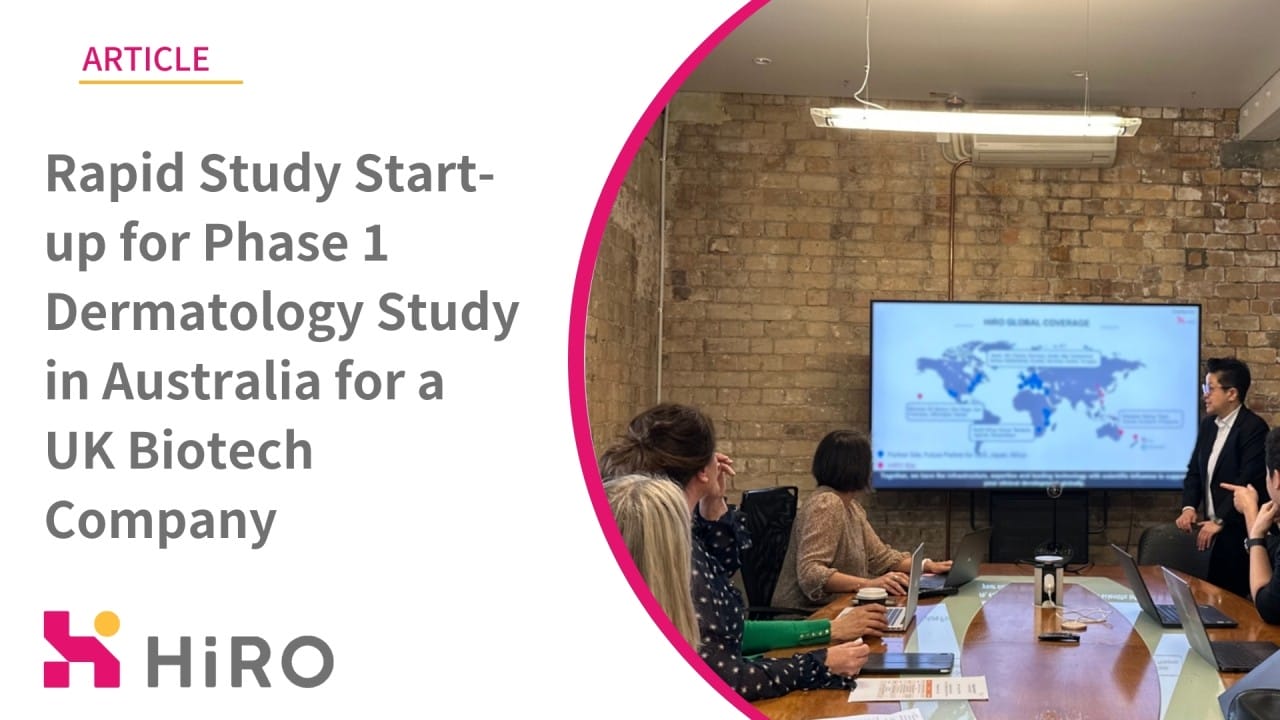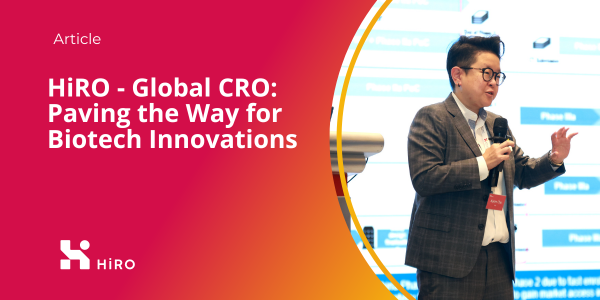HiRO: Just One of the Heroes in Clinical Research Management

Every successful brand is built on strong foundations that support its mission, vision and core values. 91% of consumers are more likely to do business with recognizable and memorable brands that provide them with relevant offers. Why is that important?
Because recognizable messaging and tone of voice, memorable visuals and core values that speak to the target audience all stem from a well-thought-out brand strategy.
Who are the heroes in clinical research management?
You’ve probably heard it said before: people are the greatest assets. A company that fails to recognize the value of their people miss the greatest opportunities for success and future growth.
Biotechs are no different. In fact, people are central to just about every aspect of their operation, from initial development of the drugs to conducting clinical trials to getting the product to market.
HiRO enjoys the play on their name, apt because these companies do indeed recognize the importance of a people-centred approach and the many ‘heroes’ that bring about new and innovative medical products.
As HiRO CEO Karen Chu points out, there are several different types of heroes in the medical research arena.
“We may have a Wonder Woman and a Professor X meeting room (at the HiRO offices),” Chu admits. “But I don’t think heroes are only in our company. I think heroes are also at the hospitals… The physicians and the nurses – I think they are heroes as well. They are all part of the journey.
“Biotech is a hero – coming up with a novel drug or device under very constrained circumstances. I think they are definitely heroes in terms of bringing that drug to market. At the same time, I think the patients are heroes, too…They put in their time to participate in clinical trials, so they do something for the good of the greater population.”
Not all heroes wear capes
- Pharmaceutical and Biotech Companies research, develop and manufacture new drugs. They invest in the discovery and development of new molecules, conduct preclinical and clinical trials, and ensure regulatory compliance.
- Research Scientists discover and develop new drugs. They conduct fundamental research to understand the biological mechanisms of diseases, identify potential drug targets, and develop new drug candidates.
- Clinical Researchers design and conduct clinical trials to evaluate the safety and efficacy of new drugs in humans. They recruit and monitor patients, collect data, and analyze the results. This includes physicians, nurses, and other healthcare professionals who work directly with patients participating in trials.
- Regulatory Authorities such as the FDA and the EMA regulate the approval and marketing of new drugs. They review the data from clinical trials to ensure the drugs meet safety and efficacy standards before they are marketed.
- Ethics Committees review and approve the protocols for clinical trials to ensure they are conducted ethically and that the rights and well-being of participants are maintained.
- Manufacturing and Quality Control professionals, such as pharmaceutical engineers, production managers, and quality control specialists, produce the drug on a large scale and ensure it meets quality standards. They adhere to Good Manufacturing Practices (GMP) and perform rigorous quality control tests.
- Healthcare Providers such as physicians, pharmacists, and nurses prescribe and administer a drug to patients once it is approved. They monitor its effectiveness, manage potential side effects, and provide patient education.
- Patients participate in clinical trials and provide feedback on their experiences with the drug. Their involvement helps researchers evaluate the drug’s safety, efficacy, and tolerability in real-world conditions. Patient advocacy groups advocate for the development and availability of treatments for specific diseases.
- Health Insurers and Payers determine which drugs are covered by insurance and how much patients will have to pay for them.
There are many groups of people involved in bringing a new drug to market:
Drug development simply could not be done without people. Ironically, the flip side is that people, specifically the recruitment and retention of patients, can be a biotech’s biggest challenge.
A people-centred protocol = greater retention and more efficiency
Given that the top 20 pharmaceutical companies spend to the tune of $60 billion on drug development each year, and the estimated average cost of bringing a drug to market is now $2.6 billion (a 140% increase in the past 10 years),¹ it is essential that each stakeholder at every stage of development is efficient.
However, 85% of clinical trials experience delays,² with every day behind schedule representing loss of revenue. One of the biggest causes of delay? Poor patient retention.
Not all patient dropouts can be prevented, but reasons for dropping out can be pre-empted and addressed to minimize the likelihood of them becoming stumbling blocks. Some common reasons may include:
- Location of the site
- Scheduling conflicts
- Personal reasons
- Lack of effective communication from the Principal Investigator (PI)
- Fear and anxiety
- Unmet expectations
It is important to remember that patient involvement is voluntary and that if it is ‘costing’ them more to participate than not – they most likely won’t.
The single most effective way to ensure minimal patient dropout rates is to develop a patient-centric (people-focused) protocol from the very beginning.
This means keeping the patient front and centre of the trial design and accommodating them as much as possible. Excellent communication from the PI and ALL members of the CRO team is essential, as is everyone’s ability to interact well with the patients.
A patient-centric protocol design may consider ease of getting to the site (public transport, free parking, etc) or how patients who work during the week may be able to participate on weekends.
Patients who experience high levels of anxiety will need to know that they have access to the PI to ask questions and that the team are patient and reassuring.
The protocol will have an in-built level of flexibility so that if things don’t always go according to plan, there is a Plan B. For example, patients who are unable to get to site may be able to participate remotely.
Conducting trials in regions that typically have successful retention rates is important, too. In Australia and New Zealand, for example, there is a strong willingness to participate in clinical trials. Trial stats from ANZCTR show that between 2015 and 2020, patient recruitment exceeded expectations, resulting in 103% retention of patients.³
Select a CRO that understands PEOPLE, not just data
Biotechs often do not have sufficient in-house expertise, and the right research partner is vital to ensure successful outcomes.
This is where HiRO can step in as one of the many heroes in the drug development and commercialization process.
With over 20 years of industry experience and strategically placed in the ANZ region, the HiRO ANZ team comprises of people with the right skills, attitude, and scientific, operational, and academic knowledge to better support global biotech’s needs.
Our people-centric team is dedicated to delivering participant recruitment and retention targets and simplifying the whole clinical research process.
“The HiRO team deeply understands each local region’s clinical trial landscape,” Chu says. “Relationships and networks are important – it is essential to work with good people. Our global networks and partnerships support biotech to save R&D time and money.”
References:
1. Innovation in the pharmaceutical industry: New estimates of R&D Costs, “Journal of Health Economics, May 2016, Volume 47, pp.20-33, sciencedirect.com
2. Facts about clinical trials. (Online) Available at: http://www.arena-international.com/clinicaltrials/facts-about-clinical-trials/1063.article (Accessed 07/07/2021)
3. Australia New Zealand Clinical Trials Register (2015-2020) Commercial Trials



